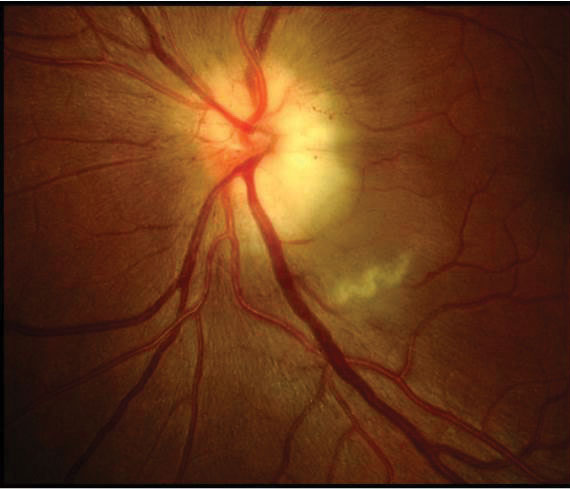 |
|
Study suggests PAMM may help distinguish between both forms of AION. Photo: Carlo J. Pelino, OD. Click image to enlarge. |
Acute anterior ischemic optic neuropathy (AION) often leads to visual impairment in the elderly. Experts say differentiating between the two forms of the condition, arteritic secondary to giant cell arteritis and non-arteritic, is crucial for quickly initiating corticosteroid treatment and preventing bilateralization in arteritic AION cases. Paracentral acute middle maculopathy (PAMM) has been reported frequently in giant cell arteritis cases. Researchers recently investigated PAMM’s diagnostic accuracy in a cross-sectional study of patients with AION to help distinguish the two subforms.
In the retrospective study, three physicians blinded to the diagnosis evaluated PAMM using macular SD-OCT. A total of 45 patients with AION were included in the study, 28 had non-arteritic AION and 17 had arteritic AION. The researchers reported that PAMM was only found in the arteritic AION group (four patients). When they evaluated PAMM as a distinctive sign of arteritic AION, the researchers reported a specificity of 100% and a positive predictive value of 100%. Sensitivity and negative predictive value were lower at 19.1% and 63%, respectively. Additionally, the researchers reported that PAMM associated with AION is a specific sign of giant cell arteritis.
“According to these results, macular OCT looking for PAMM should be performed on any patient presenting with AION,” the researchers concluded in their paper.
Mairot K, Gascon P, Stolowy N, et al. Paracentral acute middle maculopathy as a specific sign of arteritic anterior ischemic optic neuropathy. Am J Ophthalmol. 2022. [Epub ahead of print]. |


